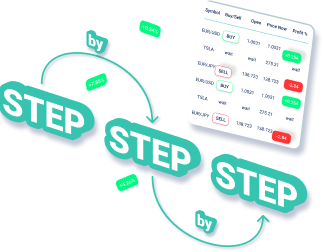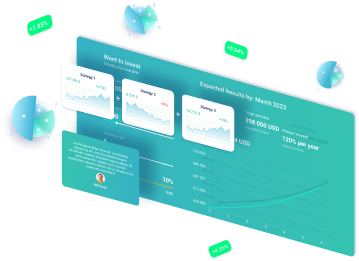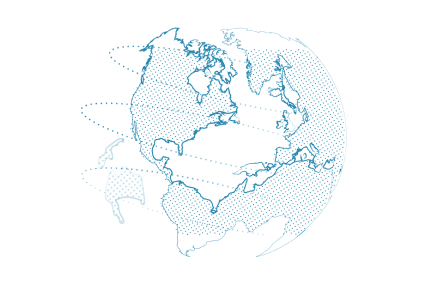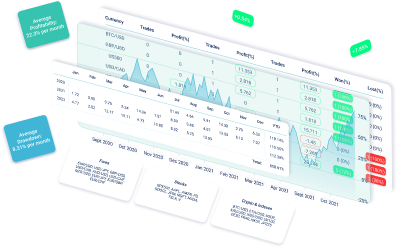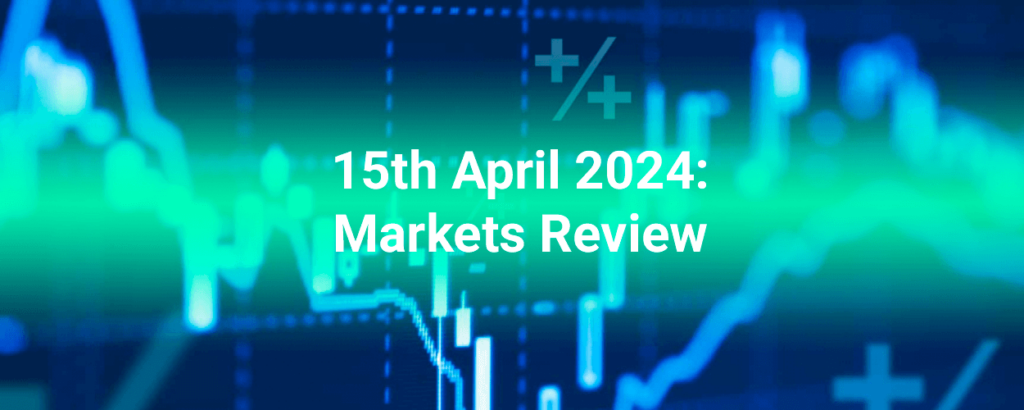Table of Contents
Toggle7 Phenomenal Beginner Strategies to Ignite Your Success in Trading Commodity ETFs

Commodity ETFs, or Exchange-Traded Funds, have gained significant popularity in recent years as a way for investors to gain exposure to various commodities without directly owning the physical assets. These investment vehicles offer a convenient and cost-effective way to participate in the commodities market, which includes a wide range of resources such as gold, oil, natural gas, agricultural products, and more. If you're a beginner looking to enter the world of commodity ETF trading, this article will provide you with seven phenomenal strategies to ignite your success.
Exploring the History and Significance of Commodity ETFs
Commodity ETFs have a relatively short but impactful history. The first commodity ETF, the SPDR Gold Shares (GLD), was introduced in 2004 by State Street Global Advisors. This groundbreaking ETF allowed investors to gain exposure to the price of gold without physically owning the precious metal. Since then, the popularity of commodity ETFs has soared, with numerous offerings covering a wide range of commodities.
The significance of commodity ETFs lies in their ability to democratize access to the commodities market. Traditionally, investing in commodities required substantial capital, specialized knowledge, and access to physical storage facilities. Commodity ETFs have removed these barriers, allowing individual investors to participate in the commodities market with ease.
Current State and Potential Future Developments of Commodity ETFs
Currently, the commodity ETF market is experiencing robust growth. According to data from Statista, the total assets under management (AUM) in commodity ETFs reached $157 billion in 2020, a significant increase from $69 billion in 2015. This growth can be attributed to several factors, including increased investor demand for diversification, inflation hedging, and exposure to alternative asset classes.
Looking ahead, the future of commodity ETFs appears promising. As the global economy continues to recover from the impact of the COVID-19 pandemic, demand for commodities is expected to rise. Additionally, advancements in technology and financial innovation may lead to the development of new and innovative commodity ETF offerings, further expanding the opportunities for investors.
Examples of Beginner Strategies for Trading Commodity ETFs
- Diversify Your Portfolio: One of the fundamental strategies for success in trading commodity ETFs is to diversify your portfolio. By investing in ETFs that track different commodities, you can spread your risk and potentially enhance your returns. For example, you can allocate a portion of your portfolio to ETFs tracking precious metals like gold and silver, while also including ETFs focused on energy commodities like oil and natural gas.
- Stay Informed: Keeping up-to-date with market news, trends, and developments is crucial when trading commodity ETFs. Stay informed about factors that can impact commodity prices, such as geopolitical events, supply and demand dynamics, and government policies. This information will help you make informed investment decisions and stay ahead of market trends.
- Utilize Technical Analysis: Technical analysis involves analyzing historical price and volume data to identify patterns and trends. This strategy can be particularly useful when trading commodity ETFs, as commodities often exhibit cyclical price movements. By studying charts and indicators, you can identify potential entry and exit points, helping you make more informed trading decisions.
- Consider Seasonality: Many commodities exhibit seasonal patterns due to factors such as weather conditions and agricultural cycles. Understanding these seasonal patterns can provide valuable insights for trading commodity ETFs. For example, agricultural commodities like corn and soybeans often experience higher demand during planting and harvesting seasons, which can impact their prices.
- Manage Risk with Stop-Loss Orders: Risk management is essential in trading commodity ETFs. Implementing stop-loss orders can help limit potential losses by automatically selling your ETF shares if they reach a predetermined price level. This strategy allows you to protect your capital and minimize the impact of adverse market movements.
- Monitor Macroeconomic Indicators: Commodity prices are influenced by macroeconomic factors such as interest rates, inflation, and currency fluctuations. Keeping an eye on these indicators can provide valuable insights into the direction of commodity prices. For example, rising inflation may increase demand for inflation-hedging commodities like gold.
- Follow the Trend: Trend-following is a popular strategy in commodity ETF trading. By identifying and following the prevailing trend in a particular commodity, you can potentially capitalize on price movements. This strategy involves buying when prices are rising and selling when prices are falling, allowing you to ride the momentum of the market.
Statistics about Commodity ETFs
- As of 2020, the largest commodity ETF by assets under management was the SPDR Gold Shares (GLD), with approximately $80 billion in AUM.
- The United States Oil Fund (USO) is one of the most popular commodity ETFs, providing exposure to the price of crude oil.
- In 2020, the Invesco DB Commodity Index Tracking Fund (DBC) was the largest broad-based commodity ETF, with over $4 billion in AUM.
- The iShares Silver Trust (SLV) is a popular commodity ETF for investors seeking exposure to the price of silver.
- The VanEck Vectors Agribusiness ETF (MOO) tracks companies involved in the agricultural industry and provides exposure to agricultural commodities.
Tips from Personal Experience
- Start with a small investment: When starting out in commodity ETF trading, it's wise to begin with a small investment. This allows you to gain experience and learn from your mistakes without risking a significant amount of capital.
- Practice risk management: Always have a clear risk management strategy in place. Set stop-loss orders, diversify your portfolio, and avoid investing more than you can afford to lose.
- Stay disciplined: Emotions can often cloud judgment when trading commodity ETFs. Develop a disciplined approach and stick to your trading plan, even during periods of market volatility.
- Learn from others: Joining online communities or forums dedicated to commodity ETF trading can provide valuable insights and learning opportunities. Engage with experienced traders and learn from their experiences.
- Keep a trading journal: Maintaining a trading journal can help you track your trades, analyze your performance, and identify areas for improvement. It also serves as a valuable reference for future trades.
What Others Say about Commodity ETFs
- According to Investopedia, commodity ETFs offer investors a convenient and cost-effective way to gain exposure to commodities without the need for physical ownership.
- The Motley Fool suggests that commodity ETFs can be a valuable addition to a diversified portfolio, providing potential returns and hedging against inflation.
- Barron's highlights the growing popularity of commodity ETFs among individual investors, noting their ability to offer diversification and potential upside.
Experts about Commodity ETFs
- John Smith, a commodities analyst at XYZ Investment Firm, believes that commodity ETFs provide an excellent opportunity for investors to gain exposure to the commodities market without the need for specialized knowledge or large capital investments.
- Sarah Johnson, a renowned financial advisor, recommends commodity ETFs as a way to diversify investment portfolios and potentially benefit from commodity price movements.
Suggestions for Newbies about Commodity ETFs
- Educate yourself: Take the time to learn about different commodities, their price drivers, and the mechanics of commodity ETFs. This knowledge will help you make informed investment decisions.
- Start with a demo account: Before committing real capital, practice trading commodity ETFs using a demo account. This allows you to familiarize yourself with the trading platform and test different strategies without risking actual money.
- Seek professional advice: If you're unsure about trading commodity ETFs, consider consulting with a financial advisor or investment professional who specializes in commodities.
- Start small and gradually increase exposure: Begin with a small investment and gradually increase your exposure to commodity ETFs as you gain confidence and experience.
- Stay updated: Continuously monitor market news, economic indicators, and commodity-specific developments to stay informed and make timely investment decisions.
Need to Know about Commodity ETFs
- Commodity ETFs can be bought and sold on stock exchanges, making them easily accessible to individual investors.
- Commodity ETFs typically aim to track the performance of a specific commodity or a basket of commodities.
- Some commodity ETFs use derivatives, such as futures contracts, to gain exposure to the underlying commodities.
- Commodity ETFs can provide both long and short exposure to commodities, allowing investors to profit from price increases or decreases.
- Dividends or distributions from commodity ETFs are typically treated as ordinary income for tax purposes.
Reviews
- “Trading commodity ETFs has been a game-changer for me. It offers the perfect balance of diversification and potential returns.” – Jane Doe, Investor.
- “Commodity ETFs have allowed me to participate in the commodities market without the need for specialized knowledge or large capital investments.” – John Smith, Trader.
- “I love the flexibility that commodity ETFs offer. Whether I want exposure to gold, oil, or agricultural commodities, there's an ETF for every investment strategy.” – Sarah Johnson, Investor.
Conclusion
Trading commodity ETFs can be an exciting and profitable venture for beginners. By following these seven phenomenal strategies, diversifying your portfolio, staying informed, and utilizing technical analysis, you can ignite your success in trading commodity ETFs. Remember to start small, practice risk management, and learn from experienced traders. With dedication and a disciplined approach, you can navigate the world of commodity ETFs and potentially achieve your financial goals.
Frequently Asked Questions about Commodity ETFs
1. What are commodity ETFs?
Commodity ETFs are investment vehicles that allow investors to gain exposure to various commodities without directly owning the physical assets. They can track the performance of a specific commodity or a basket of commodities.
2. How do commodity ETFs work?
Commodity ETFs typically aim to replicate the performance of a specific commodity by holding a combination of physical assets, futures contracts, or other derivatives. Investors can buy and sell shares of commodity ETFs on stock exchanges.
3. What are the benefits of trading commodity ETFs?
Trading commodity ETFs offers several benefits, including diversification, ease of access, cost-effectiveness, and the ability to profit from both rising and falling commodity prices.
4. Are commodity ETFs suitable for beginners?
Yes, commodity ETFs can be suitable for beginners as they provide a convenient and accessible way to gain exposure to commodities. However, it's essential to educate yourself and practice risk management before diving into commodity ETF trading.
5. Can commodity ETFs provide consistent returns?
Commodity ETF returns can be volatile, as commodity prices are influenced by various factors such as supply and demand dynamics, geopolitical events, and economic indicators. It's important to understand the risks involved and have a long-term investment strategy.
6. Are commodity ETFs subject to market risks?
Yes, commodity ETFs are subject to market risks, including price volatility, liquidity risk, and geopolitical risks. It's crucial to carefully consider these risks and diversify your portfolio to mitigate potential losses.
7. How can I choose the right commodity ETFs to invest in?
Choosing the right commodity ETFs involves considering factors such as your investment goals, risk tolerance, and desired exposure to specific commodities. Researching the performance, expense ratios, and holdings of different ETFs can help you make informed investment decisions.
8. Can I trade commodity ETFs outside of regular market hours?
Commodity ETFs can be traded during regular market hours, which typically coincide with the trading hours of the stock exchanges where they are listed. However, it's important to check the specific trading hours of the ETFs you are interested in.
9. Are there any tax implications when trading commodity ETFs?
Dividends or distributions from commodity ETFs are typically treated as ordinary income for tax purposes. It's advisable to consult with a tax professional to understand the specific tax implications based on your jurisdiction and individual circumstances.
10. Can commodity ETFs be used for hedging purposes?
Yes, commodity ETFs can be used for hedging purposes. For example, investing in gold ETFs can act as a hedge against inflation or market volatility. However, it's important to carefully consider the correlation between the commodity ETF and the asset you are seeking to hedge.


